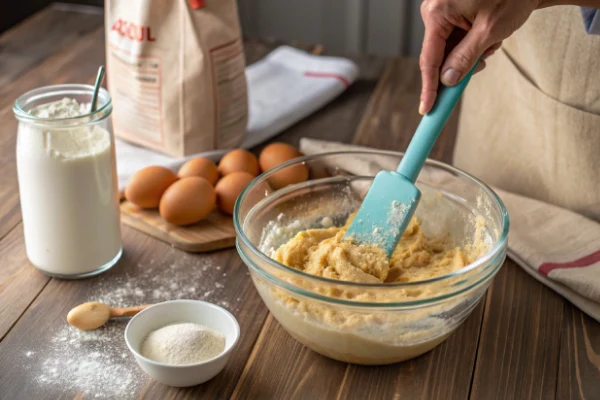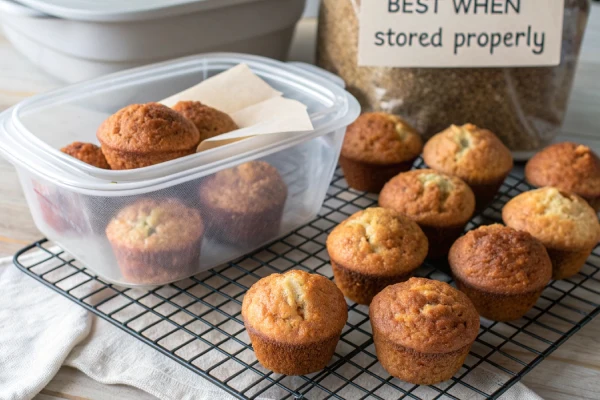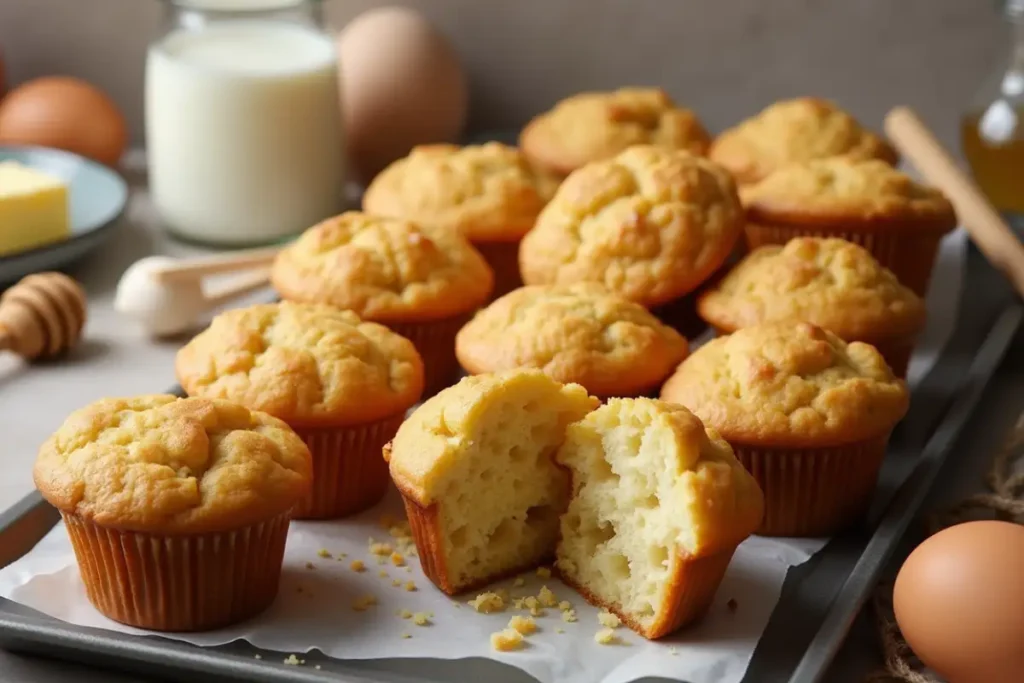Have you ever pulled muffins out of the oven only to find them dry, crumbly, and disappointing? It’s every baker’s worst nightmare! But don’t worry—you’re not alone. How to prevent dry muffins comes down to locking in moisture and achieving the perfect texture. Understanding the science behind baking and following the right techniques can save your muffins and boost your confidence in the kitchen. Let’s explore why muffins dry out and how to fix this issue for soft, moist muffins every time.
Table Of Contents
Table of Contents
Understanding Muffin Basics
Role of Ingredients in Muffin Texture
Each element in the muffin plays an important role in the texture of your muffin as well as even a small change could make a significant difference.
- Flour The flour is what provides the structure of muffins. However, too much of it can result in a dry and dense muffin therefore it is essential to be precise in measuring.
- Liquid Ingredients Liquids such as water, milk, or fruit purees help to help to hydrate the batter and help create a softer and softer crumb.
- Fats and oils Butter oil, shortening, or butter can add richness and keep your muffins from being dry. They also enhance the overall taste.
If you know the way each ingredient interacts with one another to create a recipe, you can modify the recipe to prevent dryness and get an incredibly moist and delicious result.
Causes of Dry Muffins
Dry muffins can be caused by many circumstances, but they are mostly simple errors that are easy to avoid with a bit of practice.
- Mixing the batter too much When you overmix the batter, gluten develops in the batter. This makes muffins hard and dry. Make sure that the batter for muffins must be lumpy and not smooth.
- Incorrect measurement of ingredients In addition, adding too much flour or liquid will affect the flavor of the dish. Proper measurements are crucial.
- Baking with the wrong Temperature Baking at temperatures too low or high can cause muffins to dry before when they’ve cooked completely. The use of an oven thermometer could be a game changer.
The Importance of Ingredient Ratios
The recipe for consistently moist muffins usually lies in keeping the right proportion of dry to wet ingredients.
- Wet-to-Dry Ratio The batter for muffins should be dense but not too stiff. If it’s too dry add some milk or yogurt to help bring it back to a suitable consistency.
- Substitutions Substituting ingredients such as substituting normal milk by buttermilk, or adding an extra egg could drastically enhance the texture. These modifications do not just provide moisture but also enhance the flavor.
Tips to Prevent Dry Muffins
Choosing the Right Ingredients
Utilizing high-quality ingredients can make a world of difference to the final result that your muffins will have.
- Flour Choose cake flour or all-purpose flour to get an airy with a fluffy and soft texture. Do not use excessive whole wheat flour as it can cause muffins to be heavy.
- Fats Butter gives butter an intense flavor, while oil can help maintain a consistent level of moisture. Combining the two gives you the most benefit of both.
- The buttermilk and yogurt The tangy flavors provide moisture as well as soft crumb that helps to stop dryness.
Perfect Mixing Techniques

Mixing is an art form when it involves muffins. If you overdo it, it could ruin the texture. Instead:
- Utilize a gentle fold technique to mix dry and wet ingredients. This helps reduce the formation of gluten and helps keep the batter soft.
- Stop mixing when you do not see lines of flour. It’s OK if your batter is rough; mixing too much will result in muffins that are dry and dense.
Adjusting Baking Temperature
Making sure your muffins are baked at the correct temperature is essential to retain moisture.
- Adjust Your Oven to 375 degrees F (190degC): This is the ideal temperature for the majority of muffin recipes. Low temperatures could not be able to cook them properly however higher temperatures could dry the muffins.
- Make use of the Oven Thermometer: Oven temperatures are subject to change and it’s advisable to double-check using a thermometer for precision.
- Test the muffin’s doneness using an inserted toothpick into the center and If it comes out clear or has little pieces of crumbs, the muffins are done.
Adding Moisture to Muffins
Using Add-Ins for Extra Moisture
The addition of ingredients with a high level of water can increase the amount of moisture in your muffins.
- Fruits Mashed bananas applesauce and grated zucchini make all excellent alternatives. Not only do they provide water and flavor, but they also add to the taste quality.
- Sour Cream The delicious ingredient is great for making muffins moist and tender. It’s particularly good in berry or chocolate muffins.
- Honey, or Maple Syrup: These natural sweeteners do not just enhance taste but also assist in keeping the moisture.
To get more ideas, you can check out this recipe Protein Pumpkin Muffins. A nutritious and delicious Fall treat that is a perfect balance of flavor and moisture.
Storing Muffins Properly

Storage in the right way can increase the shelf life of your muffins and ensure they’re moist for several days.
- Keep muffins in an airtight container at room temperature. Use a paper towel to soak up excess moisture and avoid soggyness.
- For a longer time of storage, put the muffins inside a sealable bag. You can reheat them using the oven or microwave for a fresh, baked-in-the-oven taste.
Common Mistakes to Avoid
Although baking muffins may appear simple there are some mistakes to avoid:
- Relying solely on Timing Baking times may differ based on the oven you use. Be sure to check for bake’s doneness visually and use the help of a toothpick instead of just relying on the timer.
- Not paying attention to cooling: Cool the muffins within the muffin pans for five minutes before moving them onto the wire rack. This will help them dry and prevent them from having a wet bottom.
- Skipping the Wet-to-Dry Balance Check Be sure to test the consistency of the batter before baking. Make adjustments if needed by adding the milk in a small amount or one teaspoon of flour.
Troubleshooting Dry Muffins
Sometimes, despite all your efforts, muffins come out dry. Here’s how you can save the muffins:
- Brush using Simple Syrup A mixture of sugar and water that is brushed on muffins will instantly provide sweetness and moisture.
- Wrapping and Warm Wrap the muffins on a damp towel, then microwave them for 10-15 seconds. The moisture is reintroduced quickly.
- Serve with Spread Dry muffins can be paired with jam, butter, or cream cheese to give an extra flavor and moisture.
Fun Muffin Recipes to Try
Do you want to put these suggestions into action? Try these tasty recipes:
- Blueberry Bliss muffins filled with fresh blueberries and a touch of lemon zest These muffins are a timeless favourite.
- Double Chocolate Chip Muffins Ideal for those who love chocolate These muffins are moist, rich, and a treat for the eyes.
- Banana Nut Muffins The perfect delicious and moist option which is great for breakfast or as a snack.
Conclusion
Moist muffins aren’t just a possibility by making a few adjustments and a few mindful methods. From selecting the correct ingredients to perfecting your mixing baking, each stage plays an important role in the end product. If you follow these guidelines you’ll never need to deal with dry, crumbly muffins ever again. Instead, you’ll look at a variety of delicious, soft muffins when you make them.
FAQs
How do muffins become so moist and fluffy?
Combining fats, the right mixing, and the right wet-to-dry ratios can result in fluffy and moist muffins. In addition, adding ingredients such as buttermilk or yogurt can enhance the texture.
What do I know when my muffins have finished baking?
Place a toothpick in the middle of the muffin. If it’s without a trace or with tiny crumbs, they’ve been baked perfectly. Beware of overbaking since it causes dryness.
Do I have to make use of milk instead of liquid in my muffin recipe?
Absolutely! Milk is rich and enhances their texture. It’s generally a better choice over water to get moist, tasty results.
What is the reason why my muffins sink to the middle?
It is usually due to mixing too much, not enough baking time or even opening the oven door too early. Be sure to follow the recipe’s directions and do not peek at them as they bake.
How can I store muffins so that they ensure they are fresh?
Keep muffins in an airtight container at temperatures of room temperature for up to three days. To store them for longer, chill them in the freezer and then heat them whenever needed to keep them fresh.



